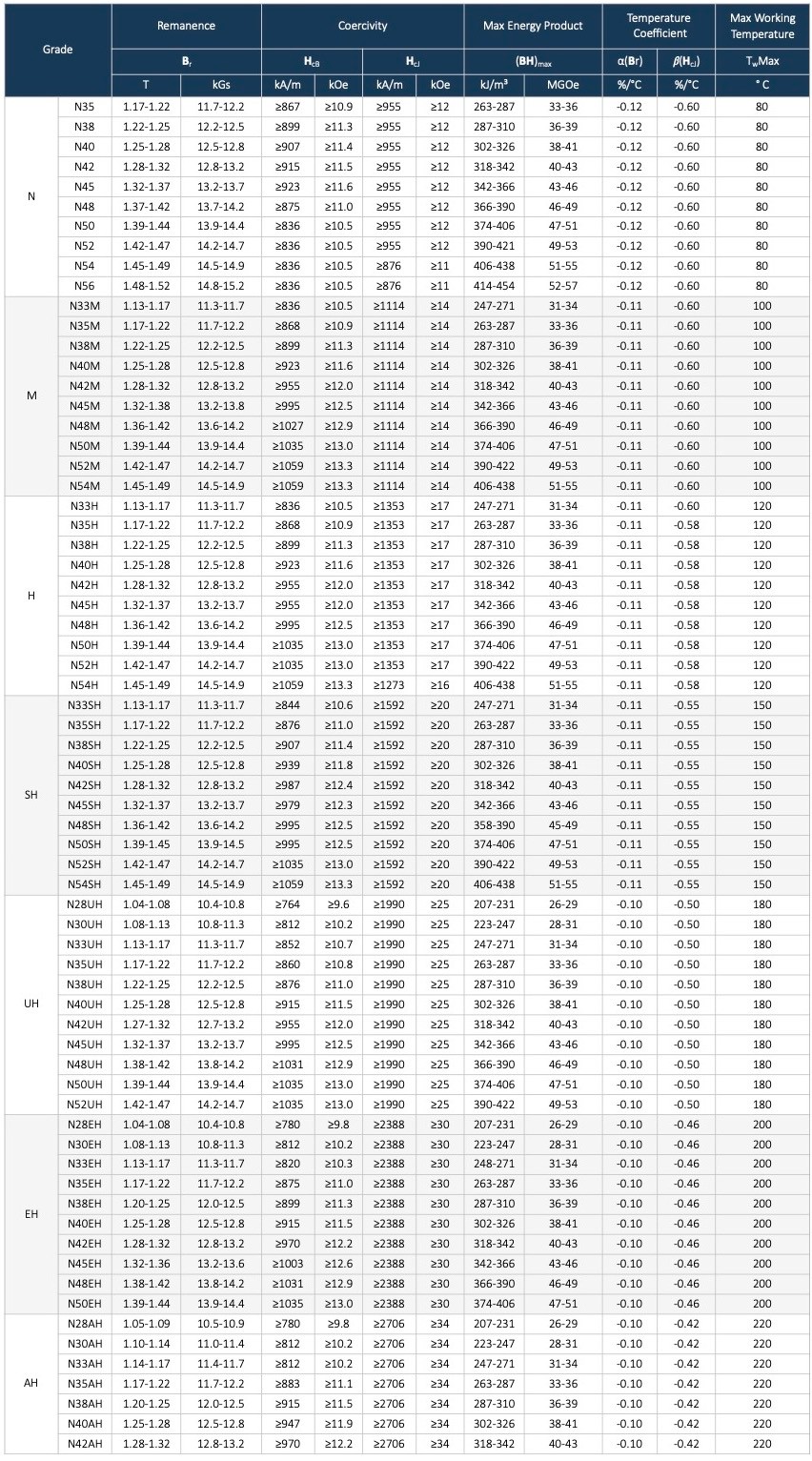Advantages
Maximum performance relative to size. Ideal for restricted space or compact applications. Can be used in extremely cold conditions (e.g. in liquid nitrogen).Standard Neodymium NdFeB is rated to +80°C (176°F) maximum. Can be rated to +100°C (212°F), +120°C (248°F), +150°C (302°F), +180°C (356°F), +200°C (392°F) and +220/230°C (428/446°F) with higher Hci versions.High coercivity (Hci) to resist demagnetisation.NxxT and L-NxxT alloys have better corrosion resizstance than standard NdFeB but still needs coating.
Disadvantages
Requires a protective coating to prevent the iron in the alloy from corroding (rusting).NxxT and L-NxxT alloys are much more expensive and will still show signs of corrosion.Higher temperature versions contain more Dy element increasing their cost.Nd and Dy prices affect the production cost.Above 150-180°C (302-356°F), SmCo may be better.

